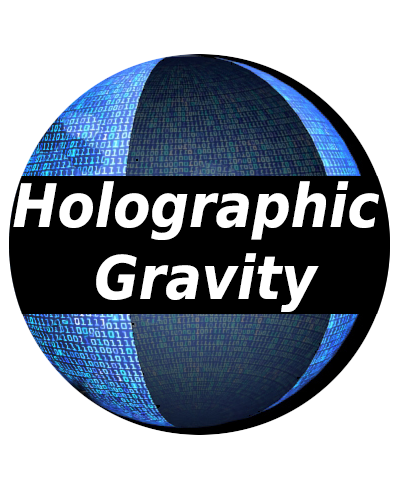Holographic Gravity
Center

Holographic Gravity (HG)
Holographic gravity proposed by Olivier Denis through the Scaling Entropy-Area Thermodynamics (SEAT) framework, unifies quantum information theory, thermodynamics, and gravitational physics. SEAT extends the concept that black hole entropy is related to surface area, proposing that this principle applies to all gravitational systems. It suggests gravity is an emergent phenomenon from the interaction of quantum entanglement, thermodynamic processes, and structured information on boundary surfaces.
SEAT aligns well with Verlinde’s theory of emergent gravity, which proposes that gravity arises as an entropic force. However, while Verlinde emphasizes the bulk properties of spacetime and how matter influences entropy, SEAT focuses on the boundaries—highlighting the structured information at these surfaces to explain the emergence of quantum gravity.
Building on the work of Jacob Bekenstein and Stephen Hawking, SEAT proposes that the entropy of gravitational systems scales with surface area rather than volume, meaning boundary-encoded information determines gravitational behavior. Advanced concepts like von Neumann entropy and the Ryu-Takayanagi conjecture are integrated to explain gravity as a macroscopic effect emerging from quantum interactions at system boundaries, with spacetime geometry arising from quantum informational structure.
In SEAT, spacetime curvature, traditionally seen as a consequence of mass and energy in Einstein’s general relativity, is reinterpreted as an effect of entropic gradients. Structured information on boundary surfaces creates entropy gradients that influence spacetime, resulting in the observed “curvature.” This “entropic order” refers to the level of organization in the informational structure around an object, ultimately altering the geometry of the surrounding space. It also refers to the arrangement and organization of information that creates a directional flow of entropy, leading to structured, predictable behavior in the system. This entropic order affects the motion of nearby objects, giving rise to gravitational behavior akin to spacetime curvature.
SEAT addresses the black hole information paradox by suggesting that black holes evolve towards order as their entropy decreases, with information preserved and emitted through entangled Hawking radiation. Information is not lost but conserved predictably, consistent with quantum mechanics.


The Ryu-Takayanagi formula extends the concept of gravitational fine-grained entropy in SEAT, connecting quantum entanglement to spacetime geometry, particularly in AdS/CFT correspondence. This implies that spacetime geometry emerges from quantum entanglement, linking gravitational properties to entanglement. SEAT broadens this conjecture beyond AdS/CFT, proposing entanglement entropy as a measure of gravitational entropy across various systems. Thus, spacetime geometry and gravity emerge from the quantum entanglement of microscopic degrees of freedom, unifying entropy, information, and geometry in quantum gravity.
SEAT brings together thermodynamics, quantum mechanics, and information theory to describe gravity as emergent, aligning with the holographic principle that the universe operates fundamentally on informational terms. Black holes serve as key models, with SEAT using surface gravity, Hawking temperature, and entanglement entropy to link gravitational dynamics with thermodynamic properties. The surface gravity (κ) of black holes connects gravitational and thermodynamic realms, bridging classical gravitational descriptions with quantum mechanics.
SEAT extends the entropy-area relationship to all gravitational systems, suggesting that principles governing black holes apply universally to other massive objects. It predicts testable phenomena, such as information conservation during black hole evaporation and relationships between entropy changes and gravitational effects like gravitational waves. The framework also proposes that quantum entanglement shapes spacetime geometry, as validated by experiments in the AdS/CFT context.
Holographic gravity in the SEAT framework challenges traditional views by describing gravity as an emergent macroscopic effect from quantum information on boundary surfaces. This unified model ties together quantum mechanics, thermodynamics, and gravity, resolving issues like the black hole information paradox and providing a new understanding of the universe. SEAT suggests spacetime curvature results from entropic effects due to structured information at boundaries, offering a novel perspective where gravity is a consequence of statistical mechanics and informational dynamics rather than a standalone force.
